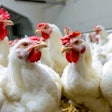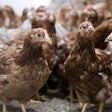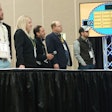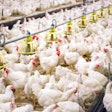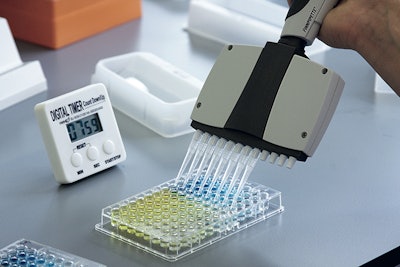
Whole genome sequencing (WGS) – a way to reveal the order of DNA building blocks found in an organism – offers an increased capacity to match bacterial strains to contaminated food products. This information can then be used to identify the ingredient, geographic region and even processing facility responsible for an outbreak.
There are approximately 48 million cases of foodborne illnesses each year, according to the Centers for Disease Control and Prevention (CDC). These illnesses occur after people eat or drink food or beverages contaminated with pathogens, chemicals or toxins.
“Today, whole genome sequencing is the routine tool for characterization of all foodborne pathogens isolated from humans, foods or environmental sources in the U.S.,” Dr. Martin Wiedmann, professor at Cornell University and recognized food safety expert in the research community, said in a January 23 webinar sponsored by USPOULTRY.
A game changer
WGS is a game changer for those involved with ensuring microbial food safety and quality, Weidmann said. It makes the detection of foodborne disease outbreaks, even small ones, fast and easy and can help identify unhygienic conditions quickly with a simple swab.
Many foodborne illnesses are caused by bacteria, whose genomes are made up of somewhere between two and ten million nucleotides. Using whole genome sequencing, researchers can make a best match determination of which strain is responsible for an outbreak and match it to the source of contamination.
In 2019, whole genome sequencing was used to identify the Danish slaughterhouse responsible for making more than 90 people sick from a Campylobacter outbreak with infected chicken.
Not a magic bullet
There will be a continued need for epidemiology to identify the sources of outbreaks. One of the major issues of the whole gene sequencing is that the bacterial genome can evolve very quickly, even over one or two generations, making precise identification difficult.
Regulatory bodies currently only require a "best match" for whole genome sequencing – meaning that two bacterial genomes could still vary and still be categorized as from the same source. Recalls can be expensive for production facilities so it is important that tracing a foodborne pathogen to the source is accurate.
“Whole genome sequencing alone is not going to tell us the whole story. We also need to look at food distribution, the natural environment and the epidemiology to understand uninterpretable genome sequence data,” Weidmann said.
Like what you just read? Sign up now for free to receive the Poultry Future Newsletter.













